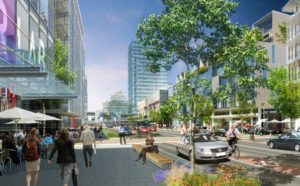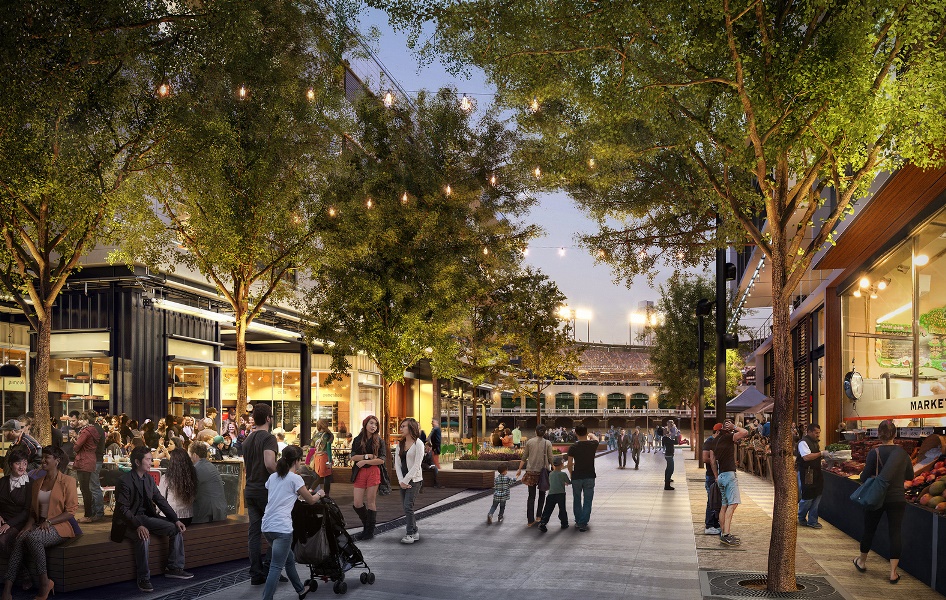Go to any medieval European city and you will see what streets looked like before the advent of the car: lovely, small narrow lanes, intimate, and undisputedly human-scale. We have very few cities in the US where you can find streets like this. For the most part what you see is streets that have been designed with the car in mind—at a large scale for a fast speed.
In my native San Francisco, California we are making the streets safer for walking and biking by widening sidewalks, turning car lanes into bike lanes, and slowing down the cars.
 As an urban designer, I work on lots of projects where we take large parcels of land and subdivide them into blocks by introducing new streets. These new streets are a rare opportunity to take a fresh look at the kinds of car-oriented roads that we are used to, and instead try to design streets that prioritize the safety and comfort of pedestrians.
As an urban designer, I work on lots of projects where we take large parcels of land and subdivide them into blocks by introducing new streets. These new streets are a rare opportunity to take a fresh look at the kinds of car-oriented roads that we are used to, and instead try to design streets that prioritize the safety and comfort of pedestrians.
These projects give us a chance to design streets that are just for people. There are therefore a number of things for socially-minded designers to consider, beyond the commonly talked about pedestrian-car dichotomy.
Here are four principals to keep in mind when repurposing a street for people:
- Streets are where utilities go;
- Streets are drainage systems;
- Streets are ecosystems;
- Streets are public rights of way.
Images courtesy of Perkins+Will.

